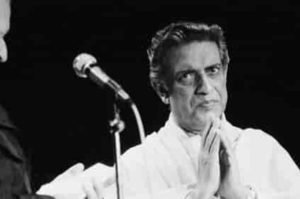Behind Satyajit Ray Tagore Documentary: In 1961, India celebrated the birth centenary of Rabindranath Tagore. As part of the commemorations, the Government commissioned Satyajit Ray to create a documentary on the poet, philosopher, and Nobel laureate. The result, simply titled Rabindranath Tagore, remains an artistic tribute to Bengal’s most celebrated son.
What audiences didn’t see was the behind-the-scenes tension—script edits, political sensitivities, enforced compromises, and even personal loss—that shaped the final cut.

Behind Satyajit Ray Tagore Documentary: Softening the Curzon Line
One of the most striking changes happened in the film’s treatment of Lord Curzon, the British Viceroy notorious for the 1905 Partition of Bengal. Ray’s original narration described Curzon’s partition plan as “cunningly designed to sow division.” But the advisory committee overseeing the production felt that such phrasing was too politically pointed for an official documentary.
The wording was toned down to “likely to induce a rift,” a change emblematic of how post-independence cultural projects often navigated between historical truth and political diplomacy.
When the Song Changed the Scene
In an early sequence on the 1905 Partition protests, Ray had planned to use the rousing “Amar Sonar Bangla,” Tagore’s song that later became the national anthem of Bangladesh. However, members of the review panel expressed concern that the choice might reduce Tagore’s image to that of a regional nationalist.
Instead, they suggested “Bidhir Bandhan Katbey Tumi” (“You Will Break the Chains of Bondage”), a song considered more in keeping with Tagore’s universalist image. While the replacement lacked the immediate patriotic recognition of the original choice, it aligned better with the film’s intended scholarly neutrality.
A Director in Mourning, Still at Work
Midway through production, tragedy struck. In December 1960, Ray’s mother passed away. He applied for leave from the Films Division to grieve and recover but was denied, with the explanation that the project’s centenary deadline left no room for delays. Ray was forced to continue editing and shooting in the shadow of personal loss, a fact almost entirely unknown to audiences.
An Unwelcome Leak
Adding to the strain, a newspaper report about the documentary appeared before it had even been cleared by the censor board. Ray was summoned to explain. He denied any role in the leak, writing to the Board that he had neither arranged a preview nor spoken to any reporter. The matter was eventually dropped, but it deepened his frustration with the bureaucratic process.
The Archive Opens Its Files
Decades later, the correspondence, script drafts, and censor notes related to the documentary were digitized and made available through the National Archives of India. They reveal the extent to which even a director of Ray’s stature had to negotiate with committees, respond to political pressures, and make concessions to official sensibilities.
Art in the Age of Oversight
Ray’s experience with Rabindranath Tagore mirrors the broader reality of mid-20th-century Indian filmmaking: state-funded art was both an opportunity and a limitation. While official support gave filmmakers resources and distribution, it also came with oversight, prescribed narratives, and the ever-present risk of political friction.
A Lasting Legacy Despite the Compromises
Despite the softened language and altered soundtrack, Ray’s Rabindranath Tagore remains a moving and aesthetically rich portrayal of the poet’s life. The compromises it endured do not diminish its significance—they highlight the reality of producing historical art within a state framework.
For researchers and film lovers, the film and its backstory stand as a reminder that every frame is often the product of both creative inspiration and institutional negotiation.
External References:
- National Archives of India: https://nationalarchives.nic.in
- Satyajit Ray Society: https://satyajitraysociety.org
- Rabindranath Tagore biography, Nobel Prize: https://www.nobelprize.org/prizes/literature/1913/tagore/biographical
Also read: Home | Channel 6 Network – Latest News, Breaking Updates: Politics, Business, Tech & More

